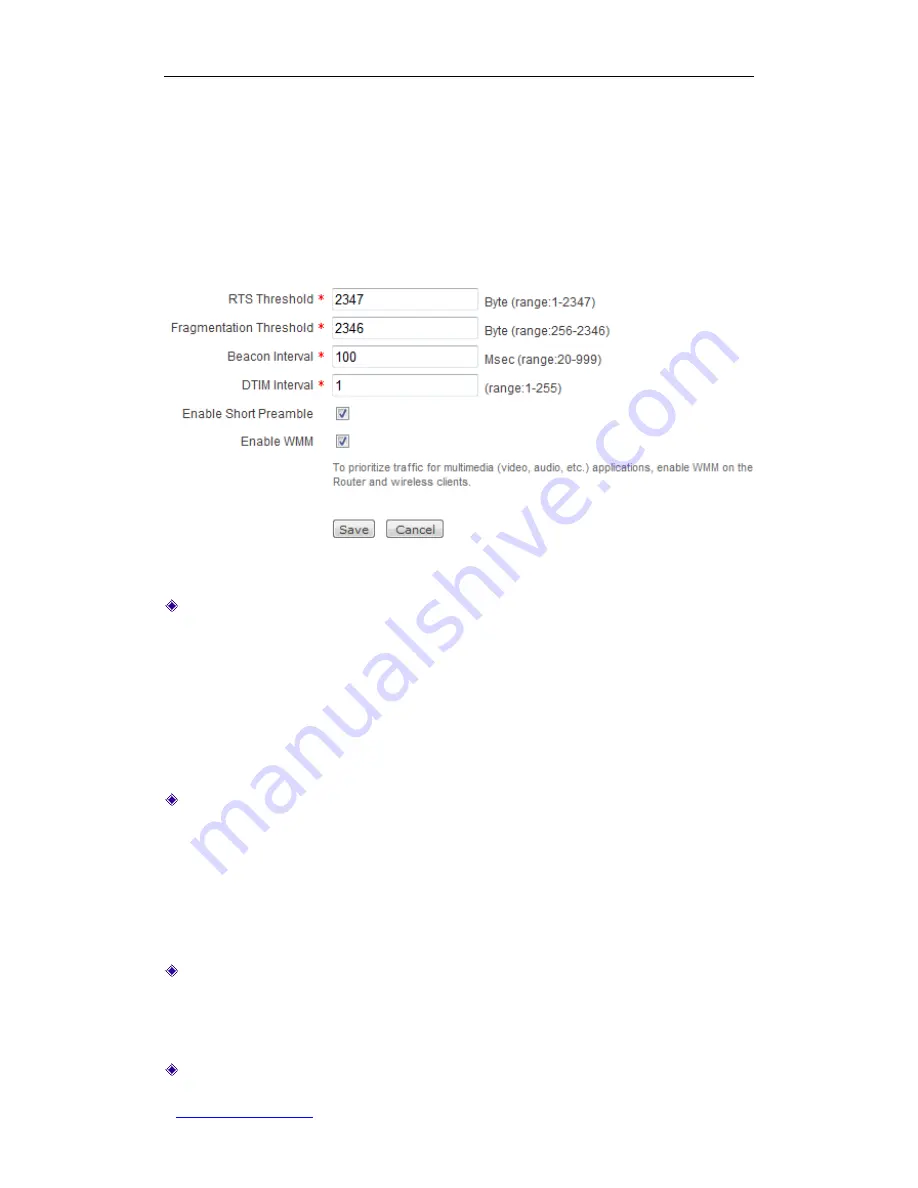
UTT Technologies Chapter 6 Wireless
http://www.uttglobal.com
Page 100
6.4
Advanced Wireless Settings
This section describes the
Wireless > Advanced Wireless Settings
page.
In this page, you can configure advanced wireless settings for your wireless connection.
We suggest that you don
’t adjust these settings unless you are an expert user. Incorrect
settings will reduce the performance of your wireless network.
Figure 6-24 Advanced Wireless Settings
RTS Threshold:
It specifies the packet size above which an RTS/CTS handshake
will be performed before sending the packet. It must be between 1 and 2347, and the
default value is 2347 bytes.
RTS/CTS handshake is used to reduce collisions introduced by hidden nodes in the
WLAN. A low threshold causes RTS packts to be sent more frequently, which
consume more available bandwidth and reduce the throughput of other network
packets. However, frequent RTS packets can help the network to recover from
interference or collisions.
Fragmentation Threshold:
It speicifies the maximum size of a packet that can be
transmitted. The packets larger than the specified size will be fragmented before
transmission. It must be between 256 and 2346, and the default value is 2346 bytes.
Reducing this value will decrease network performance. In most cases, please leave
the default value. However, to ensure data transmission, you may decrease this value
in areas where communication is poor, or in areas where there is a great deal of radio
interference.
Beacon Interval:
It specifies the time interval between beacons. The Wireless
Router periodically broadcasts beacons at the specified interval to synchronize the
wireless network. It must be between 20 and 999, and the default value is 100
milliseconds.
DTIM Interval:
It determines how often the beacon contains a Delivery Traffic






























